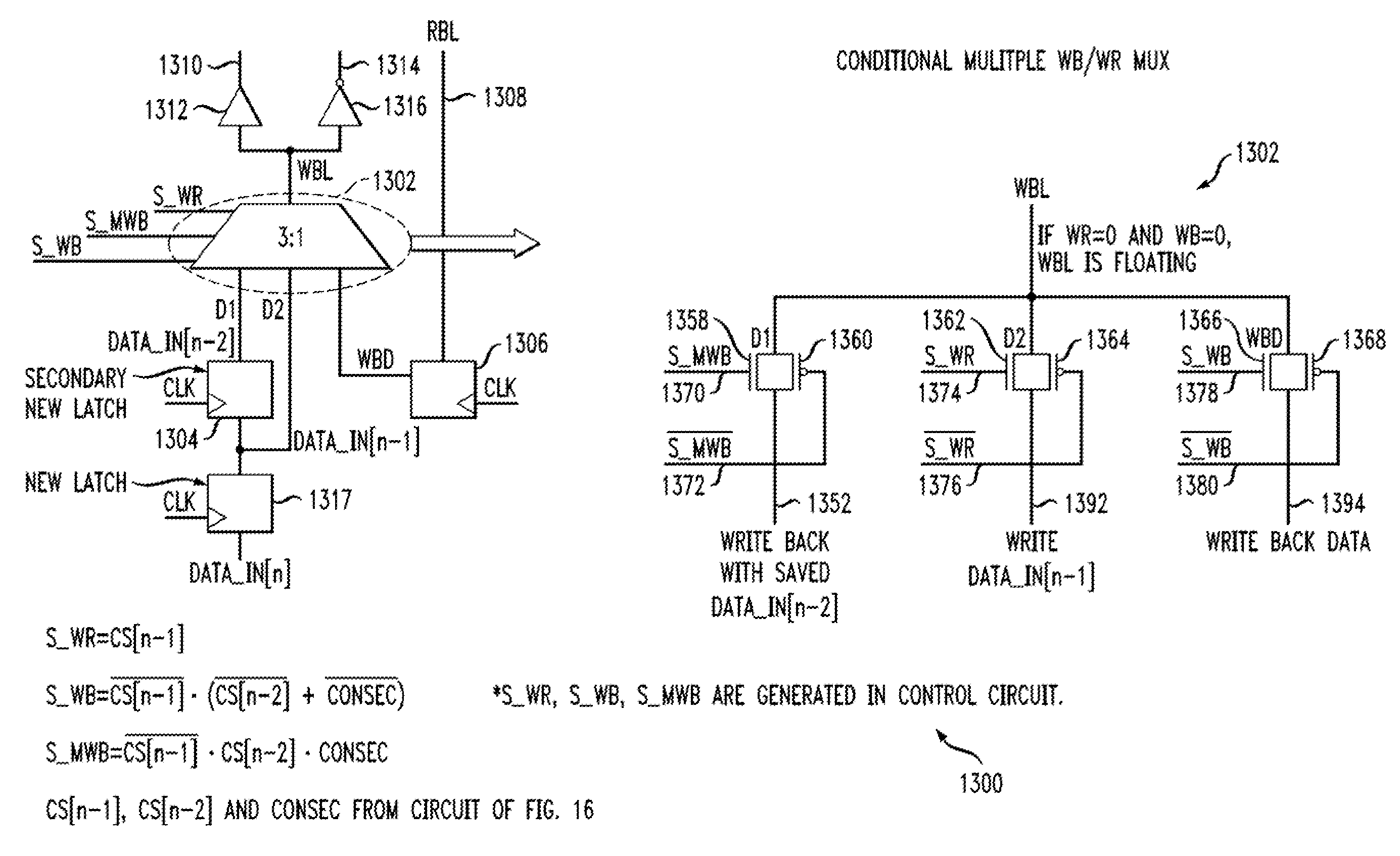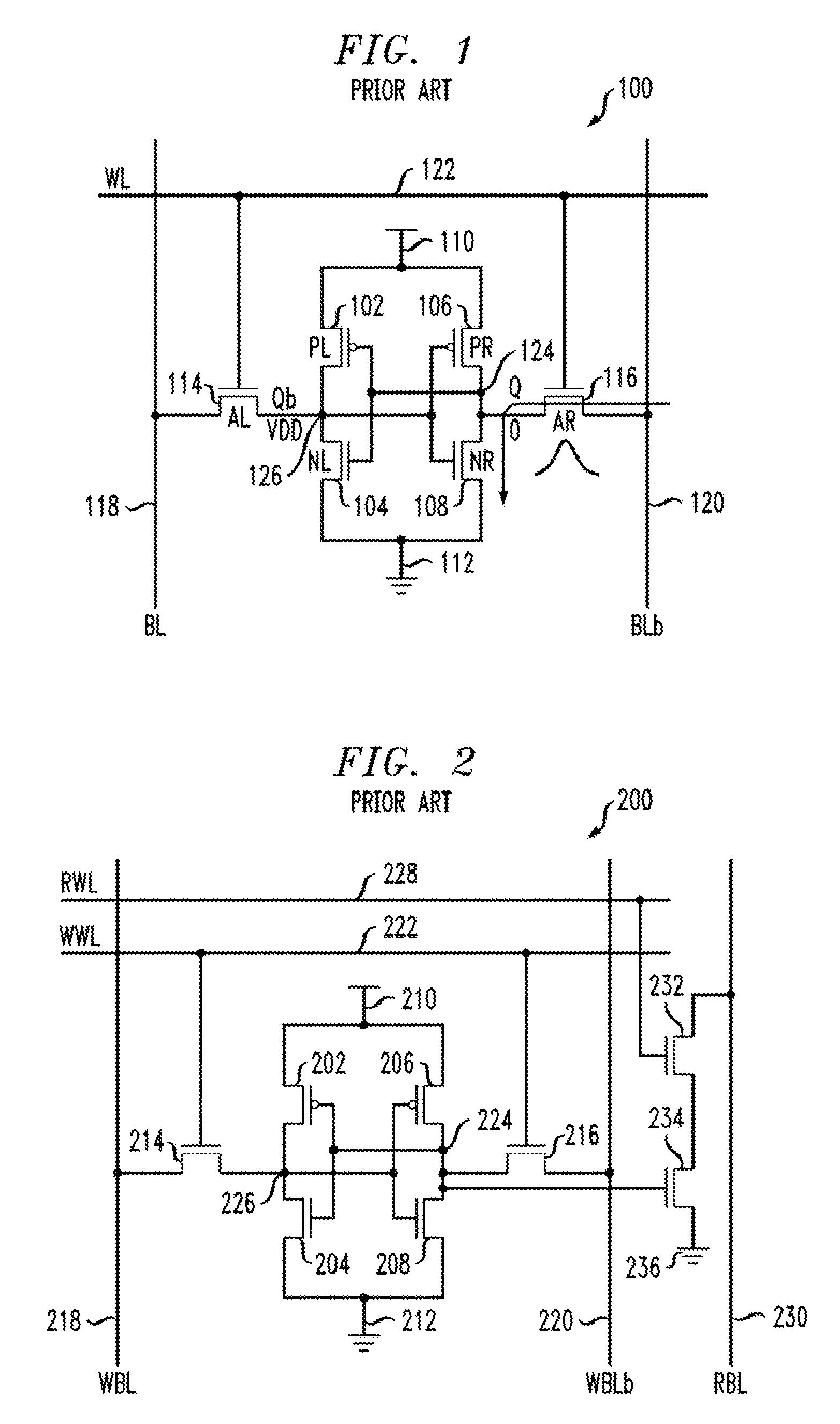Techniques For Improving Write Stability Of Memory With Decoupled Read And Write Bit Lines
a write stability and bit line technology, applied in the field of electronic memory circuits, can solve the problems of significant threshold voltage fluctuation and deterioration of static random access memory (sram) stability, and achieve the effect of improving write stability in memories
- Summary
- Abstract
- Description
- Claims
- Application Information
AI Technical Summary
Benefits of technology
Problems solved by technology
Method used
Image
Examples
Embodiment Construction
[0022]FIG. 3 shows an inventive memory cell 300. Elements in FIG. 3 similar to those in FIG. 2 have received the same reference character incremented by one hundred and will not be described again except to the extent that they differ substantially from the corresponding elements in FIG. 2. In the prior-art cell 200 of FIG. 2, during a half-select condition, when the WRITE word line 222 is raised to a high logic level ADD), in the case when node Q stores a zero and node Qb stores a one, the true WRITE bit line 218 is at VDD, that is, the same potential as node Qb, so no current is anticipated through transistor 214. However, the complementary WRITE bit line 220 is at VDD while node Q is at a zero logic level, so noise current is anticipated through transistor 216. In the exemplary inventive cell 300, the true and complementary WRITE bit lines 318, 320 are pre-conditioned to the same voltage as the storage node voltage, to avoid a “pseudo-READ” in the half select condition. This can ...
PUM
 Login to View More
Login to View More Abstract
Description
Claims
Application Information
 Login to View More
Login to View More - R&D
- Intellectual Property
- Life Sciences
- Materials
- Tech Scout
- Unparalleled Data Quality
- Higher Quality Content
- 60% Fewer Hallucinations
Browse by: Latest US Patents, China's latest patents, Technical Efficacy Thesaurus, Application Domain, Technology Topic, Popular Technical Reports.
© 2025 PatSnap. All rights reserved.Legal|Privacy policy|Modern Slavery Act Transparency Statement|Sitemap|About US| Contact US: help@patsnap.com



